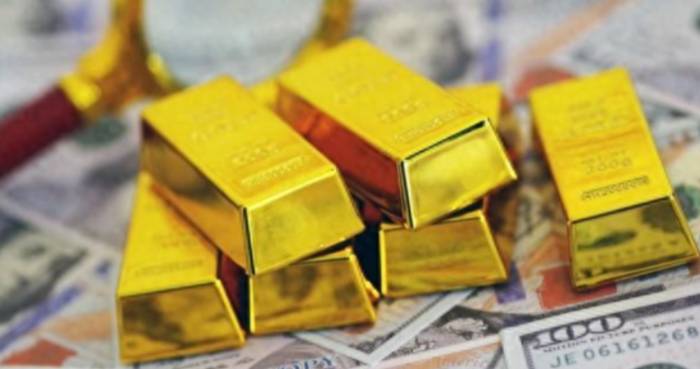Safe-Haven Capital Flows to Gold, Analysts Warn of $300 Drop
Daniel Ghali, a commodities analyst at TD Securities, has stated that despite the market signaling overbought conditions and waning Asian demand, the increasing possibility of a direct military confrontation between Iran and Israel is driving safe-haven funds into gold.
In a research report, Ghali said, "Gold selling activity is somewhat limited, but top traders still liquidated nearly 5 tons of notional gold last week." "This contrasts sharply with the sentiment of Western investors. Our interpretation of macro fund positions remains at the highest level since the Brexit referendum in July 2016; re-leveraging from risk parity and volume target funds is supporting CTA reaccumulation, and prices continue to rise unchallenged."
Ghali indicated that interest in the U.S. and Europe is primarily driven by concerns over inflation and currency devaluation.
He said, "For Western investors, as participants perceive the Federal Reserve's reaction function as asymmetrical, concerns over monetary inflation are intensifying while the U.S. economy is still doing well in many respects." "Given that aggressive global easing policies, similar to current market expectations, are usually implemented to address deteriorating economic or financial conditions, we expect monetary policy to normalize more cautiously to challenge bloated positions."
Advertisement
He added, "Historically, the prospect of monetary inflation has benefited gold prices, but there is no doubt that real prices have challenged levels not seen since the 1980s, macro fund positioning has become extreme, central bank buying activity has slowed, and renewed confidence in Asia could undermine the main drivers of gold demand." "In the short term, the prospect of direct confrontation between Iran and Israel is driving more capital towards gold."
Ghali has sounded a cautious note among recent bullish participants in the precious metals market. In early September, he warned that the gold market appears overbought according to several key indicators, and prices could fall by $200 or more per ounce.
"I absolutely think there is a risk," Ghali said when talking about gold at $2500. "The setup in the gold market today is different from what it was a few months ago."
Ghali stated that heading into 2024, there has been a historic misalignment between fund managers' positioning in gold and the market's interest rate expectations.
"In our view, this is the real reason for the gold market rebound," he said. "It's strange that they are historically under-positioned, heading into what is widely expected to be the first year of an easing cycle. Subsequently, substantial buying activity in the physical market has continued the rally."
However, Ghali noted that the situation in the gold market has changed dramatically since then.He said, "When you fast-forward to today, the positioning of fund managers is not only bloated but also at an all-time high." "The levels we are talking about are the same as those during the Brexit referendum in 2016, the 'stealth quantitative easing' narrative in 2019, and the peak of the COVID-19 crisis in March 2020, all of which marked very significant highs locally."
He added, "We believe that much of the bullish rhetoric that investors are discounting has already been baked into the cake."
Ghali said, "Meanwhile, the physical market is completely different from what it was a few months ago." "There is a strike by buyers in Asia. Please note that most of the buying activity may actually be related to currency devaluation hedging, partly because retail investors want to diversify their wealth at a time when the Chinese real estate market is dangerous, the stock market is plunging, and the bond market is not necessarily seen as a good investment, so there is really no other choice but to transfer capital to gold."

Ghali stated that the market's pricing today is completely different. He pointed out, "What we are talking about is a soft landing emphasized by a rather aggressive rate-cutting cycle." "Capital should flow from the areas with the lowest productivity to the areas with the highest productivity, so if the market is correct about this global macro expectation, then you would actually expect capital to flow to more productive uses, which is not in line with the current pricing of gold."
When asked at what price he would like to repurchase gold, Ghali said that his target is a significant drop from the current level.
He said, "We believe that a price close to $2,300, compared to the historical analogies we discussed earlier, is reasonable." "Historically, moments of positioning as tight as today's would lead to a 7% to 10% drop, so this seems reasonable to us."
In the early US session on Wednesday, spot gold fell to $2,643.81 per ounce, but after rebounding to near $2,644 for the second time before 8:30 AM Eastern Daylight Time, gold prices recovered somewhat.
Spot gold last traded at $2,656.05 per ounce, down 0.28% during the session.
Live a Comment